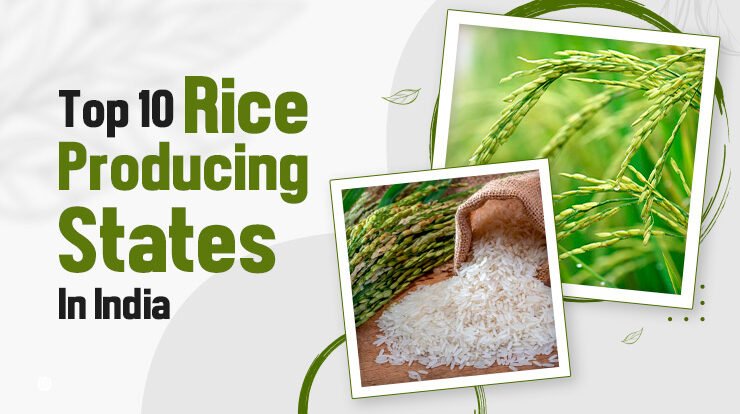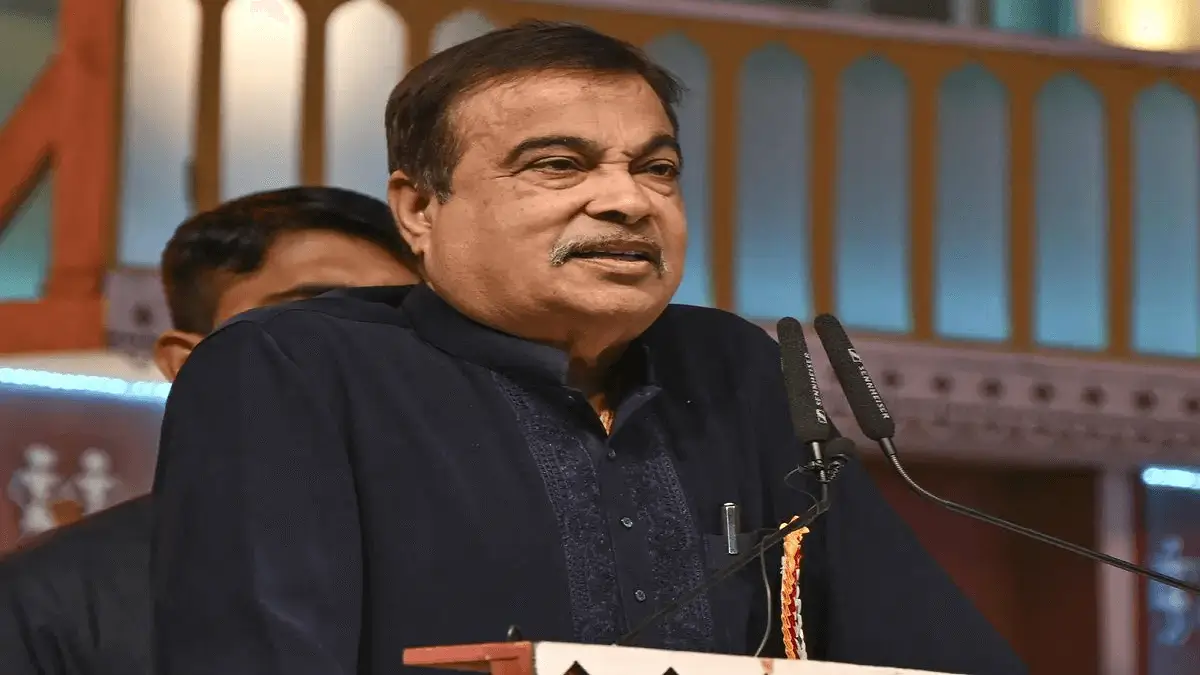Top 10 Rice Producing States in India: Insights for Government Exam Aspirants
Rice, being a staple food in India, holds significant importance in the country’s agricultural landscape. Understanding the top rice-producing states is crucial for aspirants preparing for government exams, especially those related to agriculture, economics, and rural development.
1. Uttar Pradesh: The Leader in Rice Production Uttar Pradesh takes the top spot as the leading rice-producing state in India. With its fertile lands and favorable climatic conditions, the state contributes substantially to the nation’s rice output.
2. West Bengal: A Key Player in Rice Cultivation Following closely is West Bengal, known for its extensive rice cultivation. The state’s agricultural practices and irrigation facilities have propelled it to become one of the prominent contributors to India’s rice production.
3. Punjab: Bridging Tradition with Modern Agriculture Punjab’s agricultural success story is incomplete without mentioning its significant contribution to rice cultivation. Despite facing challenges such as depleting water resources, the state continues to maintain its position among the top rice-producing states.
4. Andhra Pradesh: A Hub of Rice Varieties Andhra Pradesh boasts a diverse range of rice varieties, thanks to its varied agro-climatic zones. The state’s commitment to agricultural research and development has bolstered its standing in rice production.
5. Telangana: Rising Through Innovation Telangana’s adoption of innovative farming techniques and efficient water management practices has led to a remarkable increase in rice production. The state’s focus on agricultural modernization sets an example for others to emulate.
6. Bihar: Tapping into Agricultural Potential Bihar’s vast agricultural potential is reflected in its rice output. Despite facing challenges such as land fragmentation and inadequate infrastructure, the state continues to make strides in rice cultivation.
7. Tamil Nadu: Nurturing Rice Cultivation Tamil Nadu’s emphasis on sustainable farming practices and technological interventions has contributed to its significant rice production. The state’s initiatives aimed at enhancing agricultural productivity serve as a model for others.
8. Odisha: Harnessing Natural Resources Odisha’s rich natural resources and favorable agro-climatic conditions make it conducive for rice cultivation. The state’s focus on enhancing irrigation facilities and promoting high-yielding varieties has propelled its rice production.
9. Chhattisgarh: Empowering Rural Economy Chhattisgarh’s efforts towards rural development and agricultural growth have led to an increase in rice production. The state’s initiatives aimed at empowering farmers and enhancing productivity have yielded positive results.
10. Assam: Preserving Traditional Rice Cultivation Assam, known for its traditional rice cultivation practices, continues to contribute significantly to India’s rice production. The state’s cultural heritage intertwined with agriculture underscores its importance in the country’s food security.
Conclusion: Understanding the dynamics of rice production across different states is crucial for aspirants preparing for government exams, particularly those related to agriculture and rural development. By familiarizing themselves with the top rice-producing states, aspirants can gain valuable insights into India’s agricultural landscape and its significance in the economy.

Why this News is Important:
Understanding Agricultural Dynamics: For aspirants preparing for government exams, particularly those related to agriculture and rural development, knowledge about the top rice-producing states is indispensable. It provides insights into the agricultural landscape of India and its significance in the economy.
Implications for Food Security: Rice being a staple food in India, the production dynamics of this crop directly impact the nation’s food security. Aspirants need to comprehend the contributions of different states to rice production to grasp the nuances of food security policies and agricultural interventions.
Relevance to Rural Development: The prominence of certain states in rice production highlights the role of agriculture in driving rural development. Aspirants aiming for positions in government sectors related to rural areas must understand the agricultural dynamics to formulate effective policies and initiatives.
Economic Significance: Rice production is not only vital for food security but also holds economic importance. Knowledge about the top rice-producing states equips aspirants with insights into the economic contributions of agriculture and its linkages with other sectors.
Policy Formulation and Implementation: Understanding the variations in rice production among states is crucial for policymakers to formulate region-specific agricultural policies. Aspirants preparing for government exams need to grasp these nuances to contribute effectively to policy formulation and implementation processes.
Historical Context:
Evolution of Rice Cultivation in India: Rice cultivation in India dates back to ancient times, with historical evidence suggesting its presence during the Indus Valley Civilization. Over the centuries, various regions of India developed distinct rice cultivation practices, influenced by factors such as geography, climate, and cultural preferences.
Green Revolution and Agricultural Transformation: The Green Revolution in the 1960s brought about significant advancements in rice cultivation techniques, leading to a surge in production. States like Punjab and Haryana emerged as key players in this agricultural transformation, setting the stage for India’s self-sufficiency in food grains.
Technological Interventions and Modernization: In recent decades, technological interventions such as high-yielding varieties, mechanization, and irrigation infrastructure have revolutionized rice cultivation in India. States have adopted these advancements to enhance productivity and sustainability in agriculture.
Government Policies and Support Mechanisms: Government policies and support mechanisms have played a crucial role in promoting rice cultivation across states. Initiatives such as Minimum Support Price (MSP), agricultural subsidies, and research and development programs have incentivized farmers and boosted rice production.
5 Key Takeaways from “Top 10 Rice Producing States in India”
| Serial Number | Key Takeaway |
|---|---|
| 1 | Uttar Pradesh is the leading rice-producing state in India. |
| 2 | West Bengal follows closely as a significant contributor to India’s rice output. |
| 3 | Punjab’s agricultural success story includes its substantial contribution to rice cultivation. |
| 4 | Telangana has witnessed a remarkable increase in rice production due to innovative farming techniques. |
| 5 | Understanding the dynamics of rice production across different states is crucial for aspirants preparing for government exams, particularly those related to agriculture and rural development. |
Important FAQs for Students from this News
Q1: What is the significance of rice production in India?
- Answer: Rice is a staple food in India, and its production plays a crucial role in ensuring food security for the population. Understanding the dynamics of rice production is essential for policymakers, economists, and aspirants preparing for government exams, as it reflects the agricultural landscape and economic significance of different states.
Q2: How does the ranking of top rice-producing states impact agricultural policies?
- Answer: The ranking of top rice-producing states influences the formulation of agricultural policies at both state and national levels. States with high rice production often receive more attention in terms of infrastructure development, research funding, and policy support, aiming to sustain and enhance their agricultural output.
Q3: What are the factors contributing to the variability in rice production among states?
- Answer: Several factors contribute to the variability in rice production among states, including climate, soil fertility, irrigation facilities, agricultural practices, government interventions, and technological advancements. Understanding these factors is essential for aspirants preparing for government exams, as it provides insights into the complexities of agricultural systems.
Q4: How do government schemes support rice cultivation in India?
- Answer: Government schemes such as Minimum Support Price (MSP), agricultural subsidies, research and development programs, and irrigation projects play a significant role in supporting rice cultivation in India. These schemes aim to provide financial incentives, ensure access to inputs, promote sustainable practices, and enhance productivity in the agricultural sector.
Q5: What are the implications of rice production trends for food security and rural development?
- Answer: Rice production trends have direct implications for food security, rural livelihoods, and overall economic development. Aspirants preparing for government exams should understand how changes in rice production affect food availability, farmer incomes, employment opportunities, and rural-urban migration patterns, enabling them to analyze and address related policy challenges.
Some Important Current Affairs Links

















